Why Nature Finds Eigenstates: Grammar of Reality (Ep-6)

Our journey so far has taken us through the landscape of constrained operators: from adjoints that flip gracefully across inner products, to unitaries that preserve geometry with absolute fidelity, to normal operators that commute peacefully with their adjoints, and finally to Hermitian operators that guarantee real eigenvalues and make measurement possible. Each constraint revealed a deeper layer of structure. We learned that Hermitian operators come with three guarantees: real eigenvalues, orthogonal eigenvectors, and complete diagonalizability. But we didn't ask why nature prefers eigenstates in the first place. The answer lies not in static equations, but in the dynamics of feedback: an iterative process where operators act again and again. Through feedback, modes with larger eigenvalues amplify while smaller ones decay. Feedback is nature's algorithm for finding natural modes. And when those natural modes turn out to be measurable, stable, and real-valued, there's always a culprit behind the scenes: a Hermitian operator.
The Mystery of Natural Modes
There's something mysterious about the way nature settles.
Pluck a violin string and you don't hear noise—you hear a pure tone, as if the string has chosen its favorite frequency. But here's the puzzle: the wave equation governing that string has infinitely many solutions. Each eigenmode (each standing wave pattern) is a perfectly valid solution. And since the equation is linear, any combination of these eigenmodes is also a valid solution. We've encountered this violin string equation before in our journey. Let me cite it here again for reference:
$$u(x,t) = \sum_{n=1}^{\infty} A_n \sin\left(\frac{n\pi x}{L}\right) \cos(\omega_n t)$$
In this standing-wave solution $u(x,t) = \sum_{n=1}^{\infty} A_n \sin\left(\frac{n\pi x}{L}\right)\cos(\omega_n t)$, each term represents one eigenmode of vibration on a string of length $L$.
Here, $A_n$ is the amplitude (how strongly that mode is excited), $\sin\left(\frac{n\pi x}{L}\right)$ gives the spatial shape of the $n$-th standing wave (with $n$ half-wavelengths fitting along the string), and $\cos(\omega_n t)$ describes its time oscillation with angular frequency $\omega_n = \frac{n\pi v}{L}$, where $v$ is the wave speed.
The sum over $n$ means the total motion is a superposition of all allowed eigenmodes, though, through feedback, the system often settles into one dominant tone.
So why don't we see chaotic, twisted shapes dancing along the string? Why doesn't it vibrate as some bizarre superposition of all possible modes at once? Why does it almost always settle into a single, clean eigenmode (a pure tone)?
The differential equation itself doesn't answer this. It tells us what can happen, not what does happen. And here's something deeper: that differential equation is nothing but a Hermitian operator in disguise. Differentiation, as we've seen, is a Hermitian operation. The operator $\frac{d^2} {dx^2}$ guarantees real eigenvalues (the frequencies we hear) and orthogonal eigenfunctions (the harmonics that don't interfere).
But the Hermitian structure alone doesn't explain why systems choose a single eigenstate. It tells us the menu of possibilities, not why one dish gets ordered.
The answer lies elsewhere: not in the static equation, but in the dynamics of how the system evolves. In feedback.
Here's a teaser before we get into the mechanics. Something you can try yourself in Python. Watch what happens when you take a completely random vector and repeatedly multiply it by a symmetric matrix:
Take a random vector and repeatedly multiply it by a symmetric matrix, and it stops wandering, aligning itself along a single privileged direction.
Why do so many different systems, across such different domains of physics, converge to eigenstates? Where does this apparent "preference" come from?
The answer isn't mystical. It's mechanical. And it has everything to do with feedback.
In this episode, we step away from the static world of algebraic equations and enter the dynamic world of iteration: the process by which operators act on their own outputs, again and again, until only their most resilient patterns survive.
The Engine Under the Hood: Feedback
Almost every dynamic system has some kind of hidden feedback loop inside.
Apply an operator once: it transforms your state.
Apply it again: it acts on its own result.
Repeat this cycle and you get:
$$x_{k+1} = A x_k$$
Now suppose we start with some arbitrary initial state $x_0$. We can decompose it in terms of the eigenvectors of $A$ (you remember why, right? Hermitian operators produce orthonormal eigenvectors that span the entire space):
$$x_0 = c_1 v_1 + c_2 v_2 + \cdots + c_n v_n$$
After $k$ rounds of feedback, the state becomes (remember, eigenvectors are scaled by the operator, and that scale is the eigenvalue, as we discussed early in our episodes):
$$x_k = A^k x_0 = c_1 \lambda_1^k v_1 + c_2 \lambda_2^k v_2 + \cdots + c_n \lambda_n^k v_n$$
Each eigenstate returns scaled by its eigenvalue raised to the $k$-th power. Feedback is selective amplification.
What Feedback Does
The fate of each mode depends entirely on the magnitude of its eigenvalue:
-
If $|\lambda_i| > 1$: The mode amplifies exponentially with every iteration: runaway resonance, instability, feedback howl. The output grows with each cycle. Energy feeds back into itself, compounding. This is the regime of instability: resonance, positive feedback loops, systems that explode or ring forever.
-
If $|\lambda_i| < 1$: The mode decays, fading faster the smaller its eigenvalue. It's being actively suppressed by the feedback loop. The system loses energy with each step, but the shape of that decay is still an eigenvector. Everything else dies even faster, leaving behind a single, clean decaying tone as the world fades.
-
If $|\lambda_i| = 1$: The mode persists indefinitely, changing only in phase: stable oscillation without growth or decay. The amplitude stays constant; only the phase changes.
The value of $|\lambda|$ dictates not what the system becomes, but how quickly it forgets everything else.
Feedback is a tournament. Each mode re-enters the system, gets scaled by its eigenvalue, and competes again. Over many iterations, the weaker modes vanish. The system forgets them. Eventually, only the dominant mode survives:
$$\frac{x_k}{|x_k|} \longrightarrow v_{\text{max}}$$
The eigenstate with the largest eigenvalue wins the feedback game.
It's Everywhere
This pattern appears everywhere in physics:
Heat diffusion in a rod
Operator: $ \nabla^2 $ (Hermitian Laplacian)
Each timestep applies the diffusion operator again.Only the smoothest spatial eigenmodes survive. After a while, the rod’s temperature becomes the lowest-frequency mode.
Vibrating string or drum
Operator: $ \frac{d^2} {dx^2} $ or the Laplacian.
Each oscillation re-applies the curvature operator. The feedback locks into standing wave patterns, pure tones that dominate all other combinations.
Optical resonator (laser cavity)
Operator: propagation map between mirrors.
Light reflects back and forth; only modes that reproduce themselves after a round trip survive.Those self-consistent frequencies become the laser lines.
Mechanical structures under vibration
Operator: stiffness–mass matrix (Hermitian).
Motion feeds back through inertia and stiffness repeatedly. Each iteration isolates a natural vibration mode. Engineers call these modal shapes.
Image smoothing and diffusion filters
Operator: discrete Laplacian matrix.
Every blur step applies the same symmetric kernel again. Edges vanish first; the image converges to an eigenfunction of the blur operator — the smoothest possible pattern.
Principal Component Analysis (PCA)
Operator: covariance matrix $ C = X^\top X $ (symmetric).
Each projection–update step reuses the same linear map. Repeated application extracts the dominant eigenvector, the direction of maximum variance in data. (Applies only for some variants of PCA, because in classical PCA we calculate eigenvalues directly)
Diffusion on graphs and PageRank
Operator: symmetric graph Laplacian or transition matrix.
Random walks act as repeated applications of this operator. Highly connected nodes reinforce themselves; the process converges to a stationary distribution, the principal eigenvector.
Feedback is nature's way of iterating operators. It doesn't "choose" eigenstates by preference: it filters them through reinforcement. Only the self-consistent patterns survive.
Fixed Points of Feedback: The Meaning of an Eigenstate
If you start with an exact eigenstate $v_i$, something special happens. Feedback does nothing but rescale:
$$A v_i = \lambda_i v_i$$
The state comes back perfectly aligned with itself. No rotation, no distortion—just scaling.
Any other state, however, fragments into components, each pulled by a different eigenvalue. Repeated application of $A$ drags the state closer and closer to alignment with the dominant eigenvector.
This is what "settling into an eigenstate" really means. It's not preference. It's self-consistency under feedback.
An eigenstate is a shape that, when passed through the system, returns as itself (scaled, but not deformed). It is a fixed direction in the space of transformations.
The Need for a Measure
We've seen how feedback behaves geometrically. But now we need something quantitative.
How do we measure the degree of alignment between a state and its feedback image? How strongly does a given state $x$ reinforce itself when passed through the operator $A$?
We need a single number that captures: if this state goes through the feedback loop once, how much of itself comes back aligned with the original?
The natural answer is to measure the projection of $Ax$ onto $x$:
$$R(x) = \frac{\langle Ax, x \rangle}{\langle x, x \rangle}$$
This is the Rayleigh quotient: and it emerges naturally from the feedback story. (Actually Rayleigh quotient is not only about the feedback story but, I mean that we naturally land here with the feedback story)
What $R(x)$ Really Means
The Rayleigh quotient tells us the average scaling factor the operator applies to $x$.
-
If $x$ is an eigenvector $v_i$, then $R(x) = \lambda_i$. Perfect self-alignment.
-
For any mixed state, $R(x)$ lies somewhere between the smallest and largest eigenvalues: a weighted average of their influences.
You can think of it this way:
"If this state undergoes one round of feedback, how much does the system amplify or dampen it?"
$R(x)$ quantifies self-consistency. It's the energy per shape, the feedback reinforcement meter. It tells you how stable a given configuration is under the operator's action.
The Rayleigh Quotient as a Gateway
The beauty of $R(x)$ is that it transforms feedback into optimization.
Once you can measure self-alignment, you can ask a new question:
"Which states maximize or minimize $R(x)$?"
This question opens the door to the variational principles that underpin quantum mechanics and linear algebra:
- The Rayleigh-Ritz principle: Finding extrema of $R(x)$ within a subspace.
- The Courant-Fischer-Weyl theorem: A min-max game across all subspaces that reveals the entire spectrum.
Through these principles, the simple feedback measure $R(x)$ blossoms into a full grammar of quantization: showing why energy levels come in discrete packets rather than a smooth continuum.
The Big Story of Feedbacks
Nature never sits down to solve eigenvalue equations.
It just lets feedback play out. Every cycle of reinforcement reshapes the world, filtering out the inconsistent and amplifying the self-aligned, until only the stable patterns remain.
Those survivors (the eigenstates) are the grammar of stability. They are the vocabulary with which nature expresses persistence.
The Rayleigh quotient is how we measure that stability. It's the bridge between dynamics and spectrum, between iteration and energy.
And in the next episode, we'll see how this simple measure gives birth to an entire ladder of energies: the min-max game that makes reality quantized.
